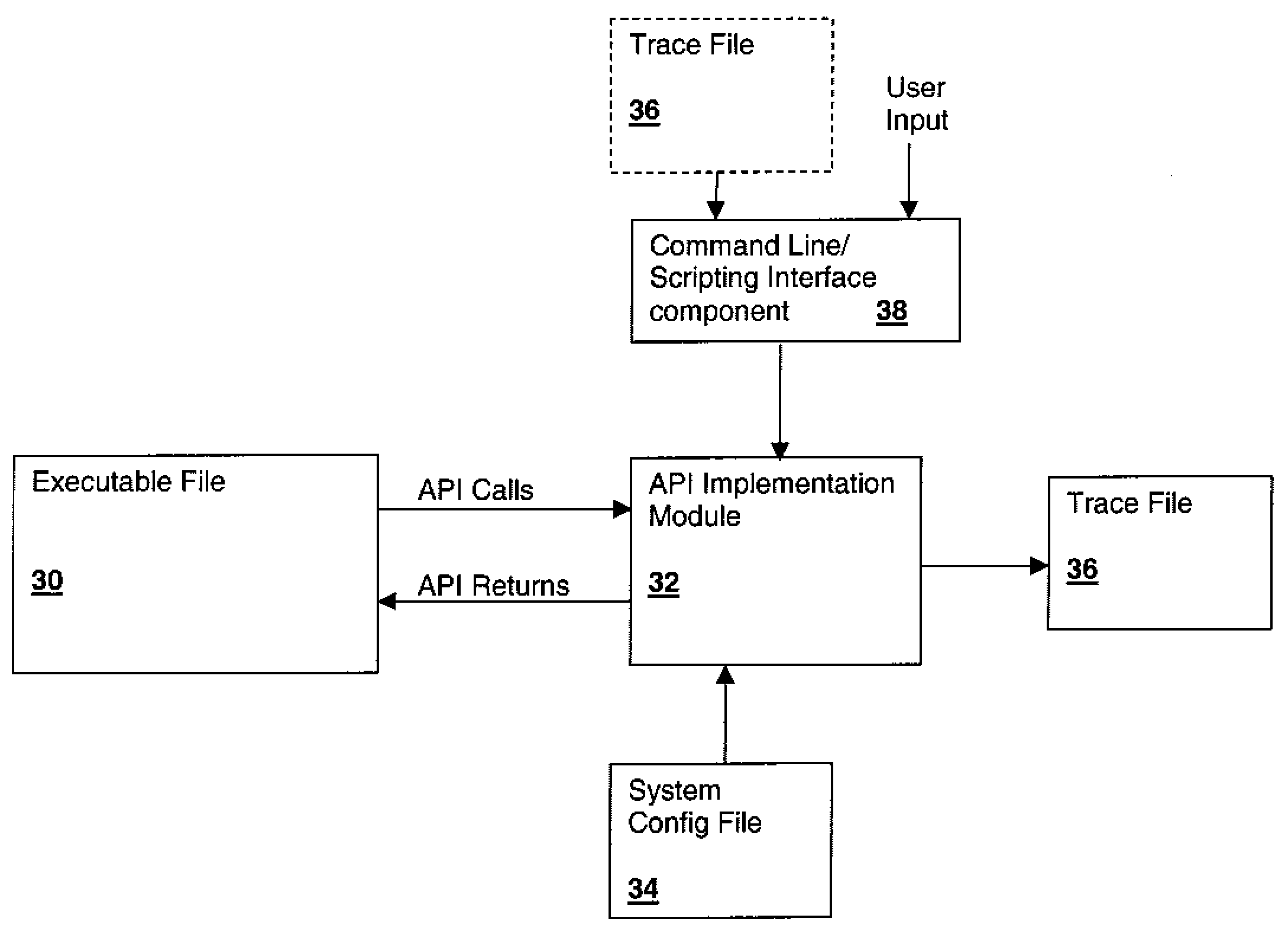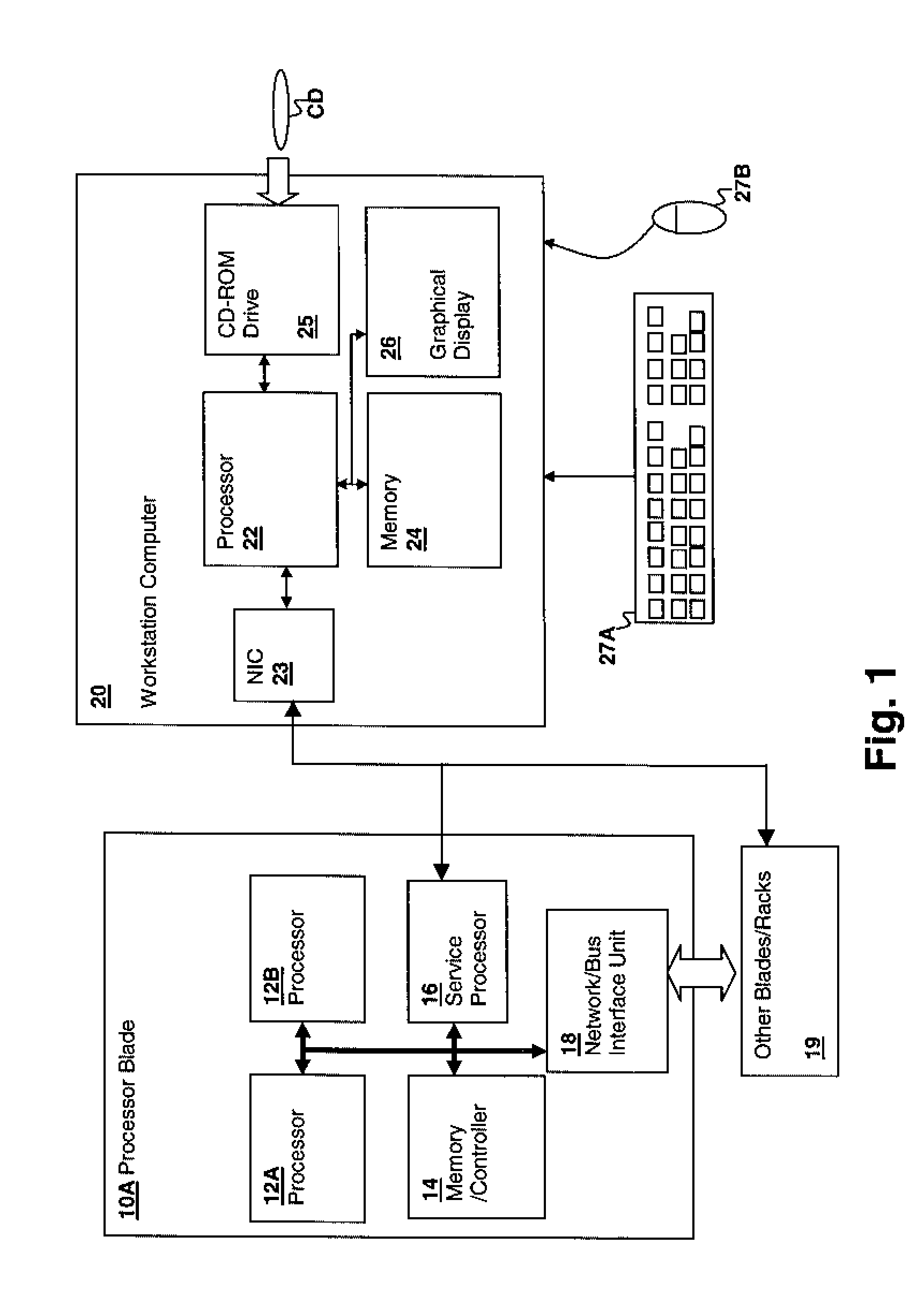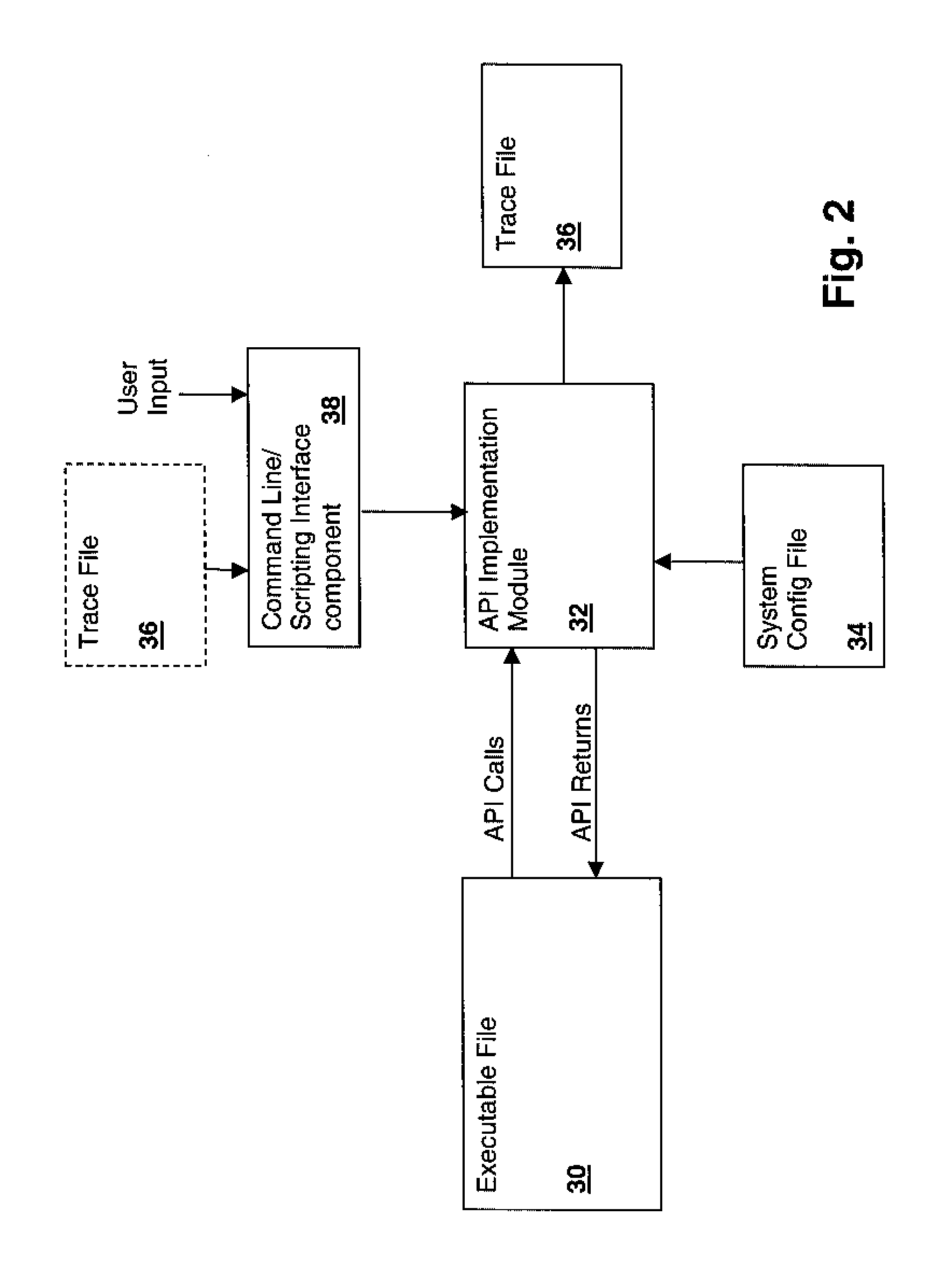Executable High-Level Trace File Generation System and Method
a high-level trace file and high-level trace technology, applied in the field of computing systems, can solve the problems of time-consuming and repetitive debugging tasks, end users debugging system startup may not have access to source code and compiler tools to make such changes, and compilation of altered modules and subsequent linking of the entire executable is a time-consuming operation
- Summary
- Abstract
- Description
- Claims
- Application Information
AI Technical Summary
Benefits of technology
Problems solved by technology
Method used
Image
Examples
Embodiment Construction
[0018]The present invention concerns a technique for generating a trace file that may be edited and re-executed as a script for replicating a sequence of high-level application programming interface (API) calls made by an executable (machine code) program. The trace file documents, in human-readable form, particular API calls for which the trace functionality is provided. The trace file includes a line for each API call with the arguments provided to that API call documented as immediate values (constants). The return values yielded by the API calls are documented as comments after the API call has returned. The resultant trace file provides flexibility in debugging systems for which the source code is not distributed and / or the ability to quickly modify a sequence of API calls without requiring re-compiling the executable program or manually entering a long sequence of command line commands that invoke the APIs. For example, a startup / maintenance module for a large-scale server sys...
PUM
 Login to View More
Login to View More Abstract
Description
Claims
Application Information
 Login to View More
Login to View More - R&D
- Intellectual Property
- Life Sciences
- Materials
- Tech Scout
- Unparalleled Data Quality
- Higher Quality Content
- 60% Fewer Hallucinations
Browse by: Latest US Patents, China's latest patents, Technical Efficacy Thesaurus, Application Domain, Technology Topic, Popular Technical Reports.
© 2025 PatSnap. All rights reserved.Legal|Privacy policy|Modern Slavery Act Transparency Statement|Sitemap|About US| Contact US: help@patsnap.com



